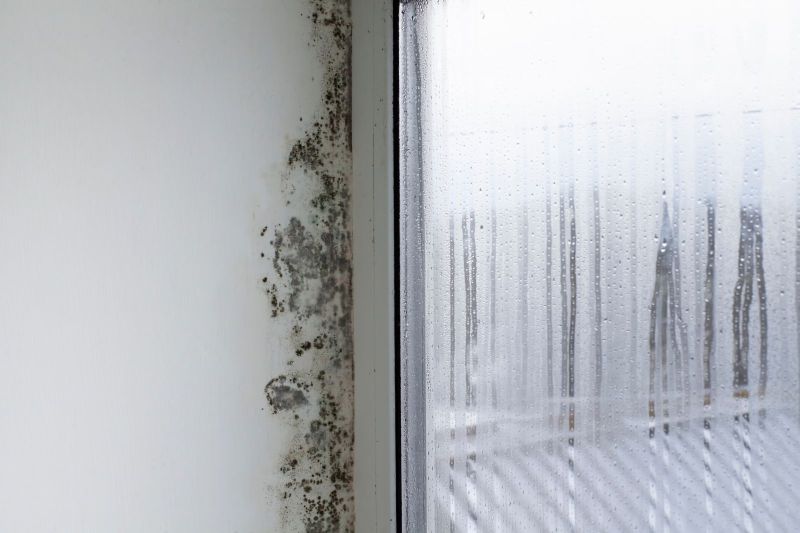Mold, a type of fungus that thrives in damp and humid environments, can pose significant risks to both your home and your health. As microscopic spores become airborne, they can infiltrate indoor spaces and lead to a variety of health issues, especially for individuals with respiratory conditions or compromised immune systems. In this article, we will explore the importance of mold testing and remediation in safeguarding your home and well-being.
The Threat of Mold
Mold growth is a common issue in homes, often occurring in hidden areas such as crawl spaces, basements, and behind walls. Its presence may go unnoticed for an extended period, allowing it to spread and thrive. Beyond causing structural damage to buildings, mold can release mycotoxins, which are harmful substances that can negatively impact air quality.
Health Implications
Exposure to mold can trigger a range of health problems, from mild allergic reactions to more severe respiratory issues. Common symptoms include sneezing, coughing, skin irritation, and eye discomfort. Individuals with asthma or allergies may experience exacerbated symptoms in mold-infested environments. Prolonged exposure can lead to more severe health complications, making it imperative to address mold issues promptly.
The Importance of Mold Testing
Mold testing is a crucial step in identifying and quantifying the extent of mold contamination in a home. Professional mold inspectors use various methods, including air sampling and surface sampling, to detect and analyze mold spores. Testing helps pinpoint the specific types of mold present and determines the concentration levels, guiding remediation efforts effectively.
DIY testing kits are available, but they may lack the accuracy and comprehensive analysis provided by professional services. Investing in professional mold testing ensures a thorough assessment, aiding in the development of an appropriate remediation plan.
The Remediation Process
Once mold is identified, remediation becomes essential to eliminate the threat and prevent further growth. Mold remediation involves the removal of contaminated materials and the implementation of measures to prevent future infestations. Here are key steps in the remediation process:
- Containment: Professionals use various containment strategies to prevent mold spores from spreading to unaffected areas during remediation. This may involve the use of physical barriers and negative air pressure systems.
- Removal of Contaminated Materials: Mold can grow on a variety of surfaces, including drywall, wood, and insulation. Contaminated materials must be carefully removed and properly disposed of to prevent the spread of spores.
- Cleaning and Disinfection: After removal, affected areas are thoroughly cleaned and disinfected using specialized cleaning agents. This helps eliminate any remaining mold spores and prevents regrowth.
- Moisture Control: Addressing the root cause of mold growth is essential for effective remediation. Professionals identify and eliminate sources of moisture, such as leaks or humidity issues, to prevent future mold problems.
- Post-Remediation Testing: After remediation, it is crucial to conduct post-remediation testing to ensure that mold levels have returned to acceptable levels. This step verifies the effectiveness of the remediation efforts.
Preventive Measures
While mold remediation is crucial for existing problems, preventing mold growth in the first place is equally important. Here are some preventive measures you can take:
- Maintain Proper Ventilation: Ensure good air circulation in your home to prevent moisture buildup. Use exhaust fans in bathrooms and kitchens, and open windows when weather permits.
- Address Water Leaks Promptly: Any water leaks, whether from plumbing or the roof, should be addressed promptly to prevent moisture accumulation.
- Monitor Indoor Humidity: Keep indoor humidity levels below 60%. Consider using dehumidifiers in damp areas like basements.
- Regular Inspections: Conduct regular inspections of your home, especially in areas prone to moisture. Early detection of mold can prevent extensive damage and health issues.
Mold testing and remediation are crucial steps in protecting your home and health from the detrimental effects of mold growth. Investing in professional testing and remediation services can ensure a thorough and effective process, providing you with peace of mind and a healthier living environment. Additionally, adopting preventive measures can go a long way in avoiding mold issues altogether. By staying vigilant and proactive, you can create a safe and healthy home for you and your family.

